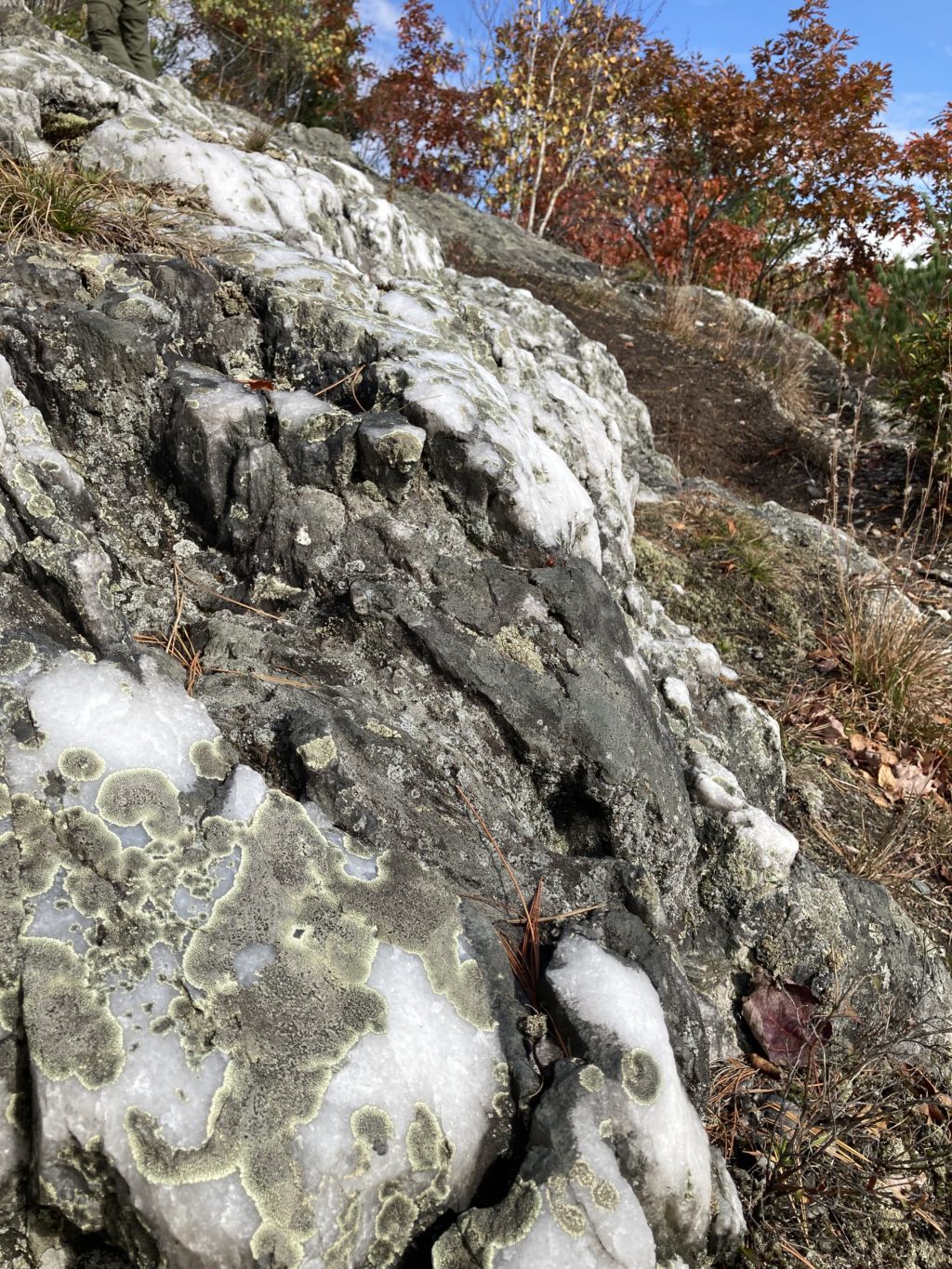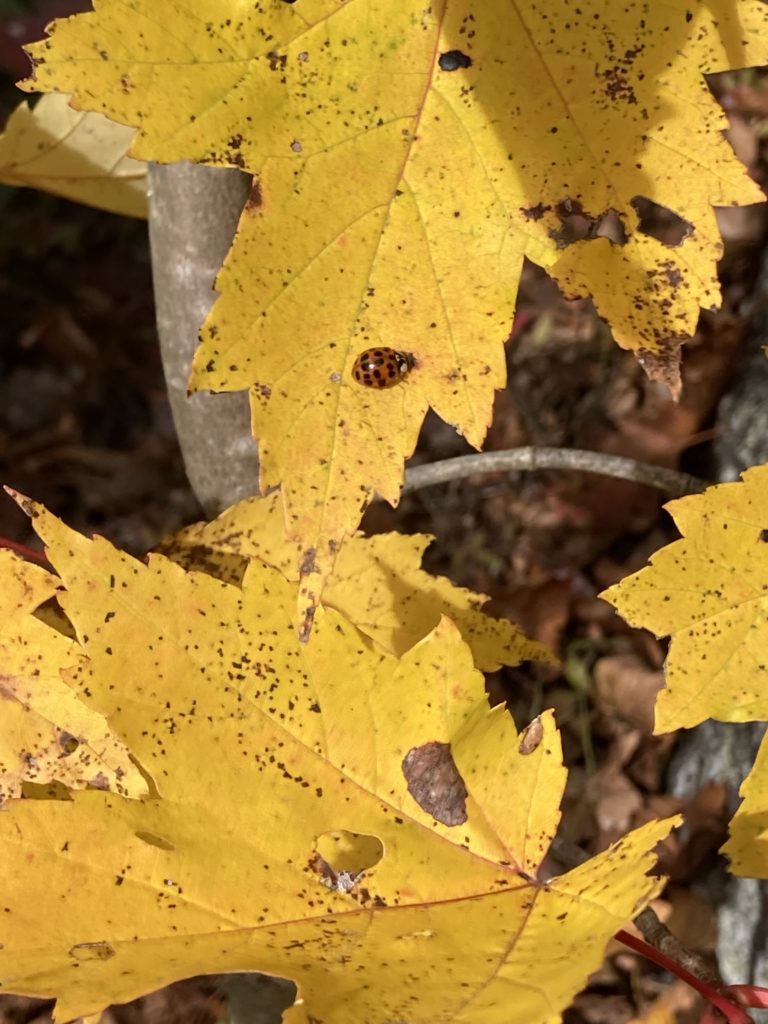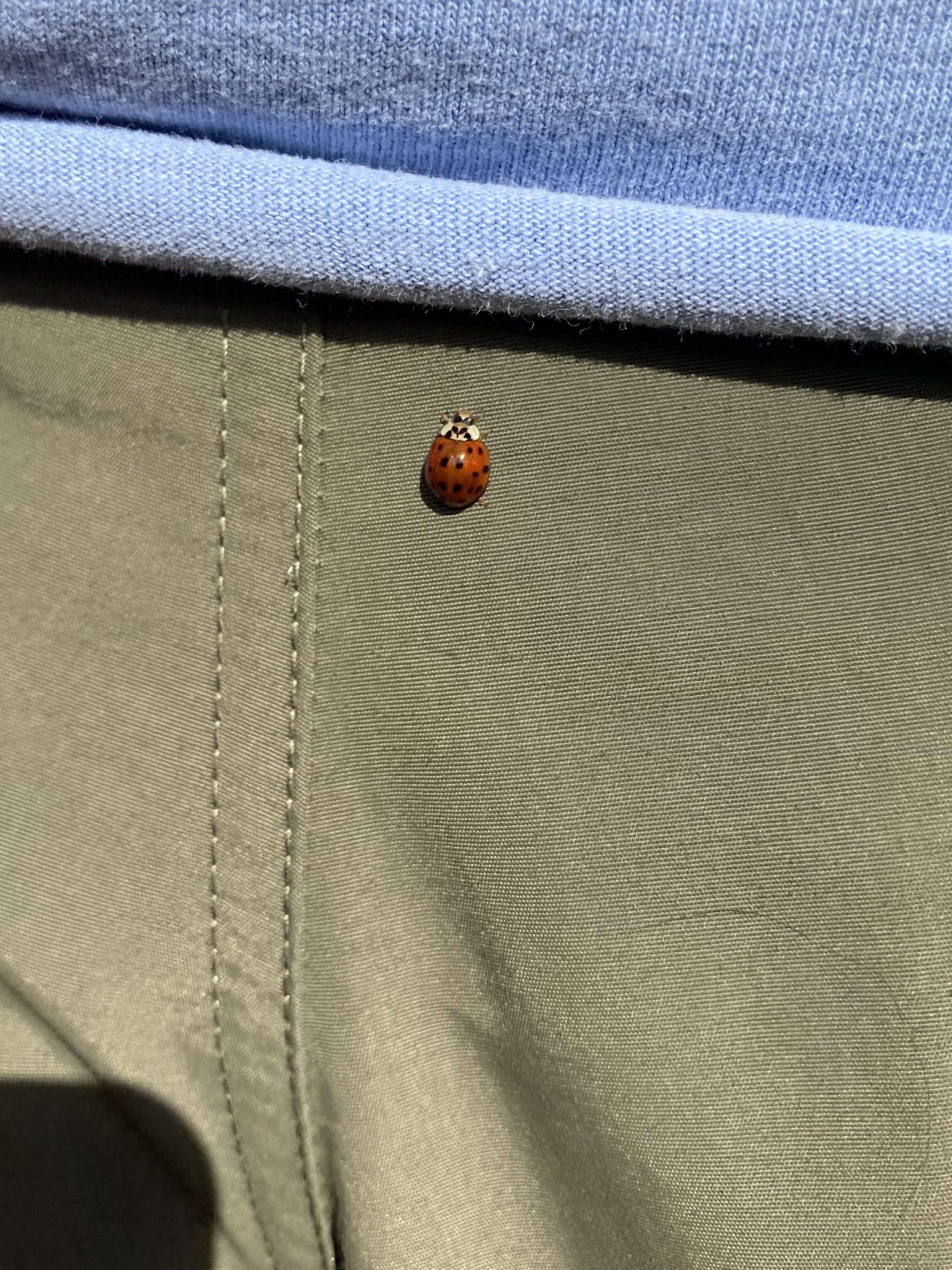Almanac: Ladybug Bombing

Veins of quartz along the trail up Mt. Negus, scene of some close encounters of the lady bug kind. Photo: Stephen Braun
Negus Mountain rises steeply from the north shore of the Deerfield River near the whitewater Mecca of Zoar Gap. At 1,778 feet, Negus is a modest mountain, but whoever created the trail to the top appears to have been ignorant of the virtues of switchbacks, which makes this a surprisingly tough climb. The lightly-used trail gains 1,148 feet in the first half mile and requires some adroit scrambling up some slippery, near-vertical rocky stretches.

A friend and I were catching our breath mid-way up Negus last weekend when we noticed dozens of ladybugs flying around and/or landing on us. The swarming and dive-bombing continued as we resumed climbing. The ladybugs seemed to be flying about with no particular direction in mind and with no preferences for either a particular color or temperature of landing spot. They were on leaves as well as rocks and seemed to be as common in shade as in sunny spots.

I didn’t know it at the time, but we were being bombed by one of the most common of the roughly 450 species of ladybugs in the United States, Asian lady beetles (Harmonia axyridis). The reason for “beetles” in the common name is that ladybugs are not true bugs in the entomological sense—they’re beetles, with the classic beetle feature that the front pair of wings have become shell-like cases called elytra that protect the rear pair of wings folded underneath. (To see this in action, check out this super cool video that uses high-speed photography to capture the crazy-fast unfolding of the rear wings of ladybugs.)
Identifying different species of ladybugs is difficult because within a single species there is great variation in the color and number of spots on the elytra. I saw some yellow specimens on some rocks, for instance. The best way to identify ladybugs is to ignore the elytra and look at the area just behind the head called the pronotum. Asian lady beetles, for example, have a signature black “M”-shaped marking in this area (if you’re looking at them from behind, that is).

The swarming we experienced is common at this time of year, especially for this species, which is also known as the Halloween Beetle because of its tendency to invade homes en masse during the month of October. The critters are looking for a sheltered spot to overwinter—the south-facing cracks in the rock walls we passed were probably where many of the ladybugs we saw ended up. Sometimes Asian Lady Beetles will congregate in great numbers, apparently for warmth. Out in nature this is no problem, but if you’re unlucky enough to find your house hosting such a congregation you will not be thrilled. Since ladybugs pose no threat to either your house or your person, and because they are such excellent predators of pest insects such as aphids, it’s best if you can find some way to live and let live. One thing you don’t want to do is crush them: ladybugs will “reflex bleed” if you disturb them, releasing a malodorous liquid from their legs (or their entire body if you squish them).
As their name implies, Asian lady beetles are not native to North America. They were introduced (along with a number of other ladybug species) in the early part of the 20th century in an otherwise-worthy attempt to control pests naturally. As usually happens, of course, the newcomers thrived and have now out-competed some of our native ladybug species. Nonetheless, another non-native species, the seven-spotted ladybug, is the official state insect of Massachusetts.
The ladybugs flying all around us were probably a mix of ladies and gentlemen—you need a microscope to tell the sexes apart. Legend has it that the “lady” in the common name dates to the Middle Ages. The story goes that swarms of aphids were threatening farmer’s crops so they prayed to the Virgin Mary. The ladybugs arrived, ate the aphids, and saved the day. From then on they started to be called “Our Lady’s beetles,” which got transmogrified over the centuries to “ladybugs.”
As you can tell from my usage in this column, I happen to like the word “ladybug,” even though purists would prefer that we all switch to “lady beetle.” I’ll use “beetle” when I have to as part of a common name, but I like the way “ladybug” rolls off the tongue and I think it’s a better fit for these archetypes of insect cuteness.
Almanac is a regular Indy column of observations, musings, and occasional harangues related to the woods, waters, mountains, and skies of the Pioneer Valley. Please feel free to comment on posts and add your own experiences or observations.
